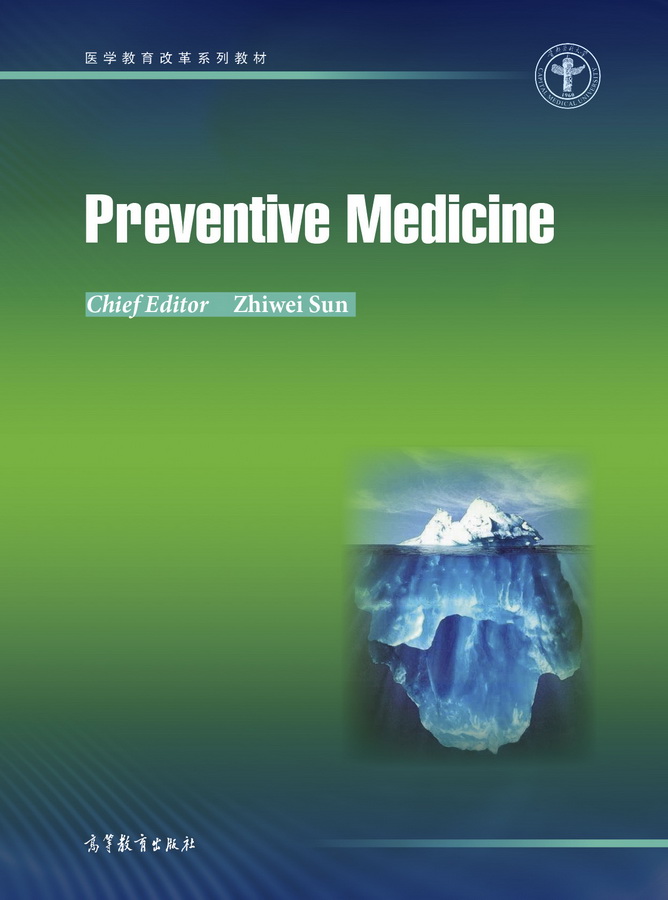李代数和代数群(英文版)
¥99.00定价
作者: [法]陶威尔
出版时间:2014-03
出版社:世界图书出版公司
- 世界图书出版公司
- 9787510070228
- 24304
- 2014-03
- O152.5
内容简介
陶威尔编著的《李代数和代数群》内容介绍:The theory of groups and Lie algebras is interesting for many reasons. In the mathematical viewpoint, it employs at the same time algebra, analysis and geometry. On the other hand, it intervenes in other areas of science, in particular in different branches of physics and chemistry. It is an active domain of current research.
One of the difficulties that graduate students or mathematicians interested in the theory come across, is the fact that the theory has very much advanced,and consequently, they need to read a vast amount of books and articles before they could tackle interesting problems.
One of the difficulties that graduate students or mathematicians interested in the theory come across, is the fact that the theory has very much advanced,and consequently, they need to read a vast amount of books and articles before they could tackle interesting problems.
目录
1 Results on topological spaces
1.1 Irreducible sets and spaces
1.2 Dimension
1.3 Noetherian spaces
1.4 Constructible sets
1.5 Gluing topological spaces
2 Rings and modules
2.1 Ideals
2.2 Prime and maximal ideals
2.3 Rings of fractions and localization
2.4 Localizations of modules
2.5 Radical of an ideal
2.6 Local rings
2.7 Noetherian rings and modules
2.8 Derivations
2.9 Module of differentials
3 Integral extensions
3.1 Integral dependence
3.2 Integrally closed domains
3.3 Extensions of prime ideals
4 Factorial rings
4.1 Generalities
4.2 Unique factorization
4.3 Principal ideal domains and Euclidean domains
4.4 Polynomials and factorial rings
4.5 Symmetric polynomials
4.6 Resultant and discriminant
Field extensions
5.1 Extensions
5.2 Algebraic and transcendental elements
5.3 Algebraic extensions
5.4 Transcendence basis
5.5 Norm and trace
5.6 Theorem of the primitive element
5.7 Going Down Theorem
5.8 Fields and derivations
5.9 Conductor
Finitely generated algebras
6.1 Dimension
6.2 Noether's Normalization Theorem
6.3 Krull's Principal Ideal Theorem
6.4 Maximal ideals
6.5 Zariski topology
7 Gradings and filtrations
7.1 Graded rings and graded modules
7.2 Graded submodules
7.3 Applications
7.4 Filtrations
7.5 Grading associated to a filtration
Inductive limits
8.1 Generalities
8.2 Inductive systems of maps
8.3 Inductive systems of magmas, groups and rings
8.4 An example
8.5 Inductive systems of algebras
Sheaves of functions
9.1 Sheaves
9.2 Morphisms
9.3 Sheaf associated to a presheaf
9.4 Gluing
9.5 Ringed space
10 Jordan decomposition and some basic results on groups
10.1 Jordan decomposition
10.2 Generalities on groups
10.3 Commutators
10.4 Solvable groups
10.5 Nilpotent groups
10.6 Group actions
10.7 Generalities on representations
10.8 Examples
11 Algebraic sets
11.1 Affine algebraic sets
11.2 Zariski topology
11.3 Regular functions
11.4 Morphisms
11.5 Examples of morphisms
11.6 Abstract algebraic sets
11.7 Principal open subsets
11.8 Products of algebraic sets
12 Prevarieties and varieties
12.1 Structure sheaf
12.2 Algebraic prevarieties
12.3 Morphisms of prevarieties
12.4 Products of prevarieties
12.5 Algebraic varieties
12.6 Gluing
12.7 Rational functions
12.8 Local rings of a variety
13 Projective varieties
13.1 Projective spaces
13.2 Projective spaces and varieties
13.3 Cones and projective varieties
13.4 Complete varieties
13.5 Products
13.6 Grassmannian variety
14 Dimension
14.1 Dimension of varieties
14.2 Dimension and the number of equations .
14.3 System of parameters
14.4 Counterexamples
15 Morphisms and dimenion
15.1 Criterion of affineness
15.2 AfIine morphisms
15.3 Finite morphisms
15.4 Factorization and applications
15.5 Dimension of fibres of a morphism
15.6 An example
16 Tangent spaces
16.1 A first approach
16.2 Zariski tangent space
16.3 Differential of a morphism
16.4 Some lemmas
16.5 Smooth points
17 Normal varieties
17.1 Normal varieties
17.2 Normalization
17.3 Products of normal varieties
17.4 Properties of normal varieties
18 Root systems
18.1 Reflections
18.2 Root systems
18.3 Root systems and bilinear forms
18.4 Passage to the field of real numbers
18.5 Relations between two roots
18.6 Examples of root systems
18.7 Base of a root system
18.8 Weyl chambers
18.9 Highest root
18.10 Closed subsets of roots
18.11 Weights
18.12 Graphs
18.13 Dynkin diagrams
18.14 Classification of root systems
19 Lie algebras
19.1 Generalities on Lie algebras
19.2 Representations
19.3 Nilpotent Lie algebras
19.4 Solvable Lie algebras
19.5 Radical and the largest nilpotent ideal
19.6 Nilpotent radical
19.7 Regular linear forms
19.8 Caftan subalgebras
20 Semisimple and reductive Lie algebras
20.1 Semisimple Lie algebras
20.2 Examples
20.3 Semisimplicity of representations
20.4 Semisimple and nilpotent elements
20.5 Reductive Lie algebras
20.6 Results on the structure of semisimple Lie algebras
20.7 Subalgebras of semisimple Lie algebras
20.8 Parabolic subalgebras
21 Algebraic groups
21.1 Generalities
21.2 Subgroups and morphisms
21.3 Connectedness
21.4 Actions of an algebraic group
21.5 Modules
21.6 Group closure
22 Ailine algebraic groups
22.1 Translations of functions
22.2 Jordan decomposition
22.3 Unipotent groups
22.4 Characters and weights
22.5 Tori and diagonalizable groups
22.6 Groups of dimension one
23 Lie algebra of an algebraic group
23.1 An associative algebra
23.2 Lie algebras
23.3 Examples
23.4 Computing differentials
23.5 Adjoint representation
23.6 Jordan decomposition
24 Correspondence between groups and Lie algebras
24.1 Notations
24.2 An algebraic subgroup
24.3 Invariants
24.4 Functorial properties
24.5 Algebraic Lie subalgebras
24.6 A particular case
24.7 Examples
24.8 Algebraic adjoint group
25 Homogeneous spaces and quotients
25.1 Homogeneous spaces
25.2 Some remarks
25.3 Geometric quotients
25.4 Quotient by a subgroup
25.5 The case of finite groups
26 Solvable groups
26.1 Conjugacy classes
26.2 Actions of diagonalizable groups
26.3 Fixed points
26.4 Properties of solvable groups
26.5 Structure of solvable groups
27 Reductive groups
27.1 Radical and unipotent radical
27.2 Semisimple and reductive groups
27.3 Representations
27.4 Finiteness properties
27.5 Algebraic quotients
27.6 Characters
28 Borel subgroups, parabolic subgroups, Cartan subgroups
28.1 Borel subgroups
28.2 Theorems of density
28.3 Centralizers and tori
28.4 Properties of parabolic subgroups
28.5 Cartan subgroups
29 Cartan subalgebras, Borel subalgebras and parabolic
subalgebras
29.1 Generalities
29.2 Cartan subalgebras
29.3 Applications to semisimple Lie algebras
29.4 Borel subalgebras
29.5 Properties of parabolic subalgebras
29.6 More on reductive Lie algebras
29.7 Other applications
29.8 Maximal subalgebras
30 Representations of semisimple Lie algebras
30.1 Enveloping algebra
30.2 Weights and primitive elements
30.3 Finite-dimensional modules
30.4 Verma modules
30.5 Results on existence and uniqueness
30.6 A property of the Weyl group
31 Symmetric invariants
31.1 Invariants of finite groups
31.2 Invariant polynomial functions
31.3 A free module
32 S-triples
32.1 Jacobson-Morosov Theorem
32.2 Some lemmas
32.3 Conjugation of S-triples
32.4 Characteristic
32.5 Regular and principal elements
33 Polarizations
33.1 Definition of polarizations
33.2 Polarizations in the semisimple case
33.3 A non-polarizable element
33.4 Polarizable elements
33.5 Richardson's Theorem
34 Results on orbits
34.1 Notations
34.2 Some lemmas
34.3 Generalities on orbits
34.4 Minimal nilpotent orbit
34.5 Subregular nilpotent orbit
34.6 Dimension of nilpotent orbits
34.7 Prehomogeneous spaces of parabolic type
35 Centralizers
35.1 Distinguished elements
35.2 Distinguished parabolic subalgebras
35.3 Double centralizers
35.4 Normalizers
35.5 A semisimple Lie subalgebra
35.6 Centralizers and regular elements
36 a-root systems
36.1 Definition
36.2 Restricted root systems
36.3 Restriction of a root
37 Symmetric Lie algebras
37.1 Primary subspaces
37.2 Definition of symmetric Lie algebras
37.3 Natural subalgebras
37.4 Cartan subspaces
37.5 The case of reductive Lie algebras
37.6 Linear forms
38 Semisimple symmetric Lie algebras
38.1 Notations
38.2 Iwasawa decomposition
38.3 Coroots
38.4 Centralizers
38.5 S-triples
38.6 Orbits
38.7 Symmetric invariants
38.8 Double centralizers
38.9 Normalizers
38.10 Distinguished elements
39 Sheets of Lie algebras
39.1 Jordan classes
30.2 Topology of Jordan classes
39.3 Sheets
39.4 Dixmier sheets
39.5 Jordan classes in the symmetric case
39.6 Sheets in the symmetric case
40 Index and linear forms
40.1 Stable linear forms
40.2 Index of a representation
40.3 Some useful inequalities
40.4 Index and semi-direct products
40.5 Heisenberg algebras in semisimple Lie algebras
40.6 Index of Lie subalgebras of Borel subalgebras
40.7 Seaweed Lie algebras
40.8 An upper bound for the index/
40.9 Cases where the bound is exact
40.10 On the index of parabolic subalgebras
References
List of notations
Index
1.1 Irreducible sets and spaces
1.2 Dimension
1.3 Noetherian spaces
1.4 Constructible sets
1.5 Gluing topological spaces
2 Rings and modules
2.1 Ideals
2.2 Prime and maximal ideals
2.3 Rings of fractions and localization
2.4 Localizations of modules
2.5 Radical of an ideal
2.6 Local rings
2.7 Noetherian rings and modules
2.8 Derivations
2.9 Module of differentials
3 Integral extensions
3.1 Integral dependence
3.2 Integrally closed domains
3.3 Extensions of prime ideals
4 Factorial rings
4.1 Generalities
4.2 Unique factorization
4.3 Principal ideal domains and Euclidean domains
4.4 Polynomials and factorial rings
4.5 Symmetric polynomials
4.6 Resultant and discriminant
Field extensions
5.1 Extensions
5.2 Algebraic and transcendental elements
5.3 Algebraic extensions
5.4 Transcendence basis
5.5 Norm and trace
5.6 Theorem of the primitive element
5.7 Going Down Theorem
5.8 Fields and derivations
5.9 Conductor
Finitely generated algebras
6.1 Dimension
6.2 Noether's Normalization Theorem
6.3 Krull's Principal Ideal Theorem
6.4 Maximal ideals
6.5 Zariski topology
7 Gradings and filtrations
7.1 Graded rings and graded modules
7.2 Graded submodules
7.3 Applications
7.4 Filtrations
7.5 Grading associated to a filtration
Inductive limits
8.1 Generalities
8.2 Inductive systems of maps
8.3 Inductive systems of magmas, groups and rings
8.4 An example
8.5 Inductive systems of algebras
Sheaves of functions
9.1 Sheaves
9.2 Morphisms
9.3 Sheaf associated to a presheaf
9.4 Gluing
9.5 Ringed space
10 Jordan decomposition and some basic results on groups
10.1 Jordan decomposition
10.2 Generalities on groups
10.3 Commutators
10.4 Solvable groups
10.5 Nilpotent groups
10.6 Group actions
10.7 Generalities on representations
10.8 Examples
11 Algebraic sets
11.1 Affine algebraic sets
11.2 Zariski topology
11.3 Regular functions
11.4 Morphisms
11.5 Examples of morphisms
11.6 Abstract algebraic sets
11.7 Principal open subsets
11.8 Products of algebraic sets
12 Prevarieties and varieties
12.1 Structure sheaf
12.2 Algebraic prevarieties
12.3 Morphisms of prevarieties
12.4 Products of prevarieties
12.5 Algebraic varieties
12.6 Gluing
12.7 Rational functions
12.8 Local rings of a variety
13 Projective varieties
13.1 Projective spaces
13.2 Projective spaces and varieties
13.3 Cones and projective varieties
13.4 Complete varieties
13.5 Products
13.6 Grassmannian variety
14 Dimension
14.1 Dimension of varieties
14.2 Dimension and the number of equations .
14.3 System of parameters
14.4 Counterexamples
15 Morphisms and dimenion
15.1 Criterion of affineness
15.2 AfIine morphisms
15.3 Finite morphisms
15.4 Factorization and applications
15.5 Dimension of fibres of a morphism
15.6 An example
16 Tangent spaces
16.1 A first approach
16.2 Zariski tangent space
16.3 Differential of a morphism
16.4 Some lemmas
16.5 Smooth points
17 Normal varieties
17.1 Normal varieties
17.2 Normalization
17.3 Products of normal varieties
17.4 Properties of normal varieties
18 Root systems
18.1 Reflections
18.2 Root systems
18.3 Root systems and bilinear forms
18.4 Passage to the field of real numbers
18.5 Relations between two roots
18.6 Examples of root systems
18.7 Base of a root system
18.8 Weyl chambers
18.9 Highest root
18.10 Closed subsets of roots
18.11 Weights
18.12 Graphs
18.13 Dynkin diagrams
18.14 Classification of root systems
19 Lie algebras
19.1 Generalities on Lie algebras
19.2 Representations
19.3 Nilpotent Lie algebras
19.4 Solvable Lie algebras
19.5 Radical and the largest nilpotent ideal
19.6 Nilpotent radical
19.7 Regular linear forms
19.8 Caftan subalgebras
20 Semisimple and reductive Lie algebras
20.1 Semisimple Lie algebras
20.2 Examples
20.3 Semisimplicity of representations
20.4 Semisimple and nilpotent elements
20.5 Reductive Lie algebras
20.6 Results on the structure of semisimple Lie algebras
20.7 Subalgebras of semisimple Lie algebras
20.8 Parabolic subalgebras
21 Algebraic groups
21.1 Generalities
21.2 Subgroups and morphisms
21.3 Connectedness
21.4 Actions of an algebraic group
21.5 Modules
21.6 Group closure
22 Ailine algebraic groups
22.1 Translations of functions
22.2 Jordan decomposition
22.3 Unipotent groups
22.4 Characters and weights
22.5 Tori and diagonalizable groups
22.6 Groups of dimension one
23 Lie algebra of an algebraic group
23.1 An associative algebra
23.2 Lie algebras
23.3 Examples
23.4 Computing differentials
23.5 Adjoint representation
23.6 Jordan decomposition
24 Correspondence between groups and Lie algebras
24.1 Notations
24.2 An algebraic subgroup
24.3 Invariants
24.4 Functorial properties
24.5 Algebraic Lie subalgebras
24.6 A particular case
24.7 Examples
24.8 Algebraic adjoint group
25 Homogeneous spaces and quotients
25.1 Homogeneous spaces
25.2 Some remarks
25.3 Geometric quotients
25.4 Quotient by a subgroup
25.5 The case of finite groups
26 Solvable groups
26.1 Conjugacy classes
26.2 Actions of diagonalizable groups
26.3 Fixed points
26.4 Properties of solvable groups
26.5 Structure of solvable groups
27 Reductive groups
27.1 Radical and unipotent radical
27.2 Semisimple and reductive groups
27.3 Representations
27.4 Finiteness properties
27.5 Algebraic quotients
27.6 Characters
28 Borel subgroups, parabolic subgroups, Cartan subgroups
28.1 Borel subgroups
28.2 Theorems of density
28.3 Centralizers and tori
28.4 Properties of parabolic subgroups
28.5 Cartan subgroups
29 Cartan subalgebras, Borel subalgebras and parabolic
subalgebras
29.1 Generalities
29.2 Cartan subalgebras
29.3 Applications to semisimple Lie algebras
29.4 Borel subalgebras
29.5 Properties of parabolic subalgebras
29.6 More on reductive Lie algebras
29.7 Other applications
29.8 Maximal subalgebras
30 Representations of semisimple Lie algebras
30.1 Enveloping algebra
30.2 Weights and primitive elements
30.3 Finite-dimensional modules
30.4 Verma modules
30.5 Results on existence and uniqueness
30.6 A property of the Weyl group
31 Symmetric invariants
31.1 Invariants of finite groups
31.2 Invariant polynomial functions
31.3 A free module
32 S-triples
32.1 Jacobson-Morosov Theorem
32.2 Some lemmas
32.3 Conjugation of S-triples
32.4 Characteristic
32.5 Regular and principal elements
33 Polarizations
33.1 Definition of polarizations
33.2 Polarizations in the semisimple case
33.3 A non-polarizable element
33.4 Polarizable elements
33.5 Richardson's Theorem
34 Results on orbits
34.1 Notations
34.2 Some lemmas
34.3 Generalities on orbits
34.4 Minimal nilpotent orbit
34.5 Subregular nilpotent orbit
34.6 Dimension of nilpotent orbits
34.7 Prehomogeneous spaces of parabolic type
35 Centralizers
35.1 Distinguished elements
35.2 Distinguished parabolic subalgebras
35.3 Double centralizers
35.4 Normalizers
35.5 A semisimple Lie subalgebra
35.6 Centralizers and regular elements
36 a-root systems
36.1 Definition
36.2 Restricted root systems
36.3 Restriction of a root
37 Symmetric Lie algebras
37.1 Primary subspaces
37.2 Definition of symmetric Lie algebras
37.3 Natural subalgebras
37.4 Cartan subspaces
37.5 The case of reductive Lie algebras
37.6 Linear forms
38 Semisimple symmetric Lie algebras
38.1 Notations
38.2 Iwasawa decomposition
38.3 Coroots
38.4 Centralizers
38.5 S-triples
38.6 Orbits
38.7 Symmetric invariants
38.8 Double centralizers
38.9 Normalizers
38.10 Distinguished elements
39 Sheets of Lie algebras
39.1 Jordan classes
30.2 Topology of Jordan classes
39.3 Sheets
39.4 Dixmier sheets
39.5 Jordan classes in the symmetric case
39.6 Sheets in the symmetric case
40 Index and linear forms
40.1 Stable linear forms
40.2 Index of a representation
40.3 Some useful inequalities
40.4 Index and semi-direct products
40.5 Heisenberg algebras in semisimple Lie algebras
40.6 Index of Lie subalgebras of Borel subalgebras
40.7 Seaweed Lie algebras
40.8 An upper bound for the index/
40.9 Cases where the bound is exact
40.10 On the index of parabolic subalgebras
References
List of notations
Index





